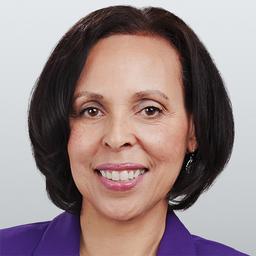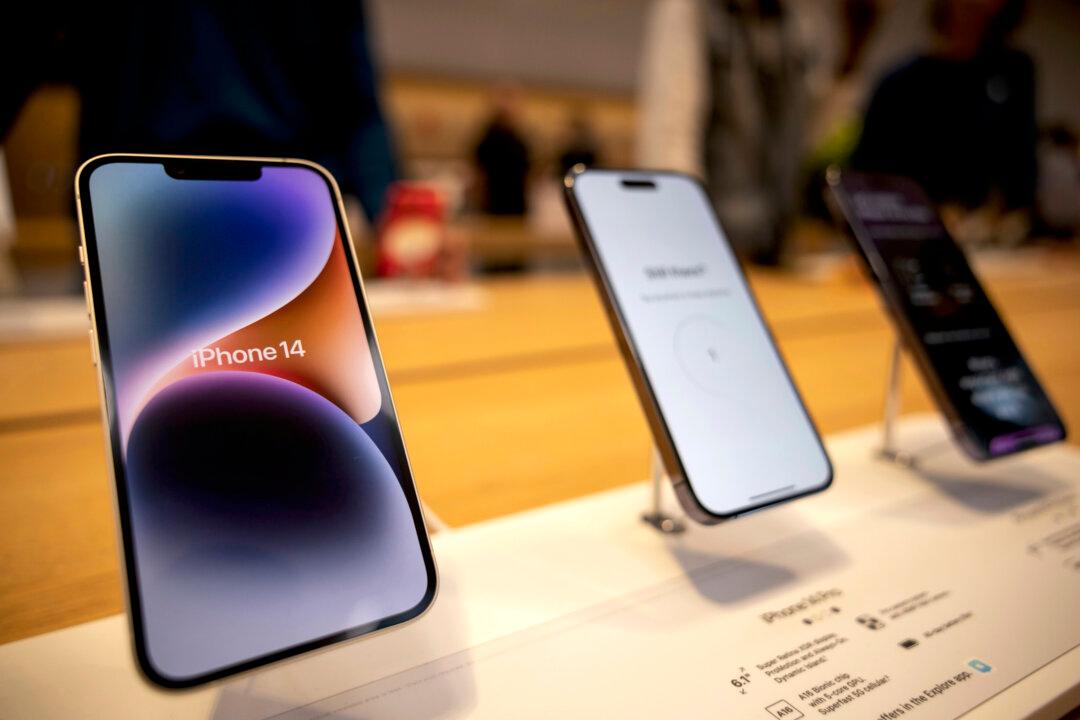NEW YORK—Michael O'Malley’s Ditmas Park Victorian home is loaded with old world character and charm, humble décor mixed with antique treasures. Built in the early 1900s, his home is not overly modernized and still dons the original stained glass windows.
But there is one small modernization that makes O'Malley’s home stand out from all the other Victorian homes on the block: a 6.9 kilowatt solar panel array that sits atop his Dutch gambrel-style roof.

The idea for the solar panels started seven years ago, when O'Malley thought it was the socially conscious thing to do. But he wasn’t able to get a solar company to do the job, despite having a signed contract.
He later learned that getting a qualified solar company to perform a residential installation in New York City isn’t easy because the payoff is too small. Part of the trouble is that all of the city’s complicated codes and regulations take months to navigate before the panels can even be installed. Luckily for O'Malley, in 2013 he heard about a city initiative to help weary homeowners get the job done.
Getting a Contractor
A retired union carpenter for the city, O'Malley, who is now a home inspector, is familiar with LEED requirements for green building. He said he knows a thing or two about airflow measurements and ductwork airtightness. “I don’t have a certification for blower doors or anything like that, but I am very aware,” he boasted.
O‘Malley did his research and ultimately made a deal with a small company that he later learned did not have much experience working on homes in New York. Two days before the equipment was to be delivered, the deal went sour. “I got my deposit back but it left a bitter taste in my mouth because I had gotten a number of estimates,” O’Malley said.
So he went back to the drawing board and re-contacted some of the other companies, and much to O'Malley’s surprise a couple of them said to him, “We don’t do residential anymore.”
Red Tape
The paperwork, engineering, code requirements, and everything else are the same, whether it’s a big job or a small job, but the big job pays more. Payment is based on the kilowatt-hour size of the system, according to O'Malley. “So you maybe have a little more engineering and other issues in a big, big system, but the fact of the matter is you make much more profit on it than you do on a small one.”
Not only that, but there are a fair number of hoops to jump through before the installation can be completed and approved.
The process is tedious, and the right solar company has to know its way around all the red tape. The city’s building department requires the installer to do a number of things, including file for a permit, hire an engineer, meet all the building codes and regulations, and get an inspection.

The installer has to determine the size of the system based on an estimate of the homeowner’s electric usage and the viability of the roof as a good fit for solar panels. The roof and attic have to be physically inspected and an engineer has to prepare a feasibility report.
When all is said and done, the installation itself only takes about a week, but the process can take up to a year.
The state of New York does have a subsidy program called NY–Sun Solar Electric Incentive Program operated by the New York State Energy Research and Development Authority (NYSERDA), but it only works if the customer qualifies and if the contractor agrees to abide by the program’s terms and conditions.
When O'Malley was under contract seven years ago, the inexperienced contractor kept ignoring NYSERDA’s requests for information, which halted the progress of the project.
Here Comes Solar
In 2013, a program called Solarize Brooklyn came to O‘Malley’s neighborhood. There was a meeting in the library on nearby Cortelyou Road. “Anybody interested, come in,” he recalled. O’Malley said it was a local program that tried to help people buy solar as a group, or at least get estimates as a group.
“Their system was … we made a deal with these companies and we'll give you the free estimates, they will give you all the information you need, and depending on how many people actually sign up to buy a system and actually get it installed, we will give a discount,” he explained.

The program O'Malley was in was the precursor to Here Comes Solar, explained Elana Laichena, the program manager for Here Comes Solar, a new program that started in January. “Solar [Here Comes Solar] has shifted the focus from just being a customer service to enabling people to drive change in the energy system,” she said.
It’s now broadened to cover all of the five boroughs based on the goal of helping more diverse communities gain access to solar energy. It focuses on low- to moderate-income homeowners, as well as people living in affordable housing and renters.
“The idea is to really make solar affordable and accessible to New Yorkers across the income spectrum,” she said. The program recognizes how difficult it is for homeowners and renters to get affordable solar electricity. Therefore, it offers help designed to empower buyers through group purchasing or leasing.
Neighbors can pool their buying power and get treated like a bigger customer, said Laichena. Mostly funded by NYSERDA, as well as private foundations, Here Comes Solar is contacted by homeowners and tenants through social media, community organizations, and community boards. Interested people are encouraged to reach out to their neighbors by hosting gatherings at their homes.
Once a group is formed, the program will handle all of the upfront prescreening and site assessments, which benefits the homeowners as well as the installers. Homeowners know whether or not their roofs are a good fit for solar and installers don’t have to waste time finding out that some of the roofs are not suitable.
Homeowners are presented estimates and have the option to sign on as members of Here Comes Solar. The program then works with the group to actually select an installer from a list of five vetted companies. Here Comes Solar continues to assist each homeowner throughout the duration of the process.
Push for a Solar NY
An estimated 66 percent of all buildings in the city are suitable for solar panels, representing a total potential of 5.8 million kilowatts of solar power, according to CUNY, and NYC Solar Map studies. Nearly 2,500 residential buildings are already accessing solar electricity and generating 36,241 kilowatts.
Mayor Bill DeBlasio set a goal in 2014 to reduce the city’s emissions by 80 percent below 2005 levels by 2050. New York is the largest city in the world to commit to this goal, de Blasio said, and followed up with major investments in solar for city buildings, part of a 10-year plan One City Built to Last.
Nearly 2,200 city residents were permitted to install solar panels in 2014, compared to just 662 in 2013. And so far in 2015, 1,180 New Yorkers have gotten solar approvals, according to city building department statistics reported by the Daily News.
Carl Robichaud and Garry Golden, Brooklyn homeowners and neighbors, are part of a six-member group that signed on with Here Comes Solar in March. They believe now is a good time to get solar because of the low price and the good rate they can get through the program. “The actual rate per watt that we secured was the result of the total size of the multihouse system,” said Golden.
The program is designed to save groups 20 percent on the average cost for a solar installation in Brooklyn, according to Laichena.
Robichaud likes the program because it simplified the process. “I found purchasing solar panels to be a daunting process,” he said. Understanding the various tax credits and incentives, as well as how to figure out what the best options are, was complicated.
Golden wanted to support Here Come Solar’s mission to increase solar across the city. “What I was most interested in was helping build more of a movement in Brooklyn,” he said.
This city program is one of many across the state. “We have friends and partners that are running Solarize campaigns all over the place like Binghamton and the Hudson Valley,” said Laichena. Through these partnerships, New York has achieved a ranking of eighth in the country with an installed solar capacity of 456,000 kilowatts, according to the Solar Energy Industries Association.
As for O'Malley, he’s been enjoying his solar system since June 2014, and said he is very happy with it. “The system is very easy to read and understand. If it’s not working, I get an alert.”

Not only that, but his monthly bill is significantly lower. It dropped from a range between $200 and $290 to a range of $23 to $90. The total cost of his solar array was $46,129, but after receiving a state-administered subsidy, and a set of tax credits, the cost was just $17,295.
Here Comes Solar will continue to assist city residents for years to come, according to Laichena. To achieve the mayor’s emissions reduction goal, other types of renewable energy like wind and clean biodiesel will also need to be integrated with solar. “It’s never going to be all solar and it shouldn’t be all solar,” she said.
Solar in New York, By the Numbers
$28,000
The average cost of
a complete 5-kilowatt solar
system in NYC
$33,000
The average cost of
a complete 5-kilowatt solar
system in Brooklyn
4–5 Years
Time it takes a homeowner to recover the purchase of a solar system
20 Years
Approximate number of years homeowners enjoy free electricity after their initial solar investment is recovered
****
5 Kilowatts
The average size of
a solar installation
in NYC
36,000 Kilowatts
Amount of solar power
installed in NYC
5.8 Million Kilowatts
Amount of solar power that could potentially be installed in NYC
****
2,481
Number of residential
buildings in NYC
with solar installed
468
Number of commercial
buildings in NYC with solar installed
66%
Buildings
in NYC suitable
for solar
*****
Eighth
New York’s ranking
in the country for
installed solar capacity
456,000 Kilowatts
Amount of solar power
installed in NY state
7,284
Number of people in NY state
employed by the solar
industry in 2014
SOURCE: NYS Open Data (December 2000–February 2014), CUNY, NYC Solar Map, Solar Energy Industries Association, The Solar Foundation
Source links
https://data.ny.gov/Energy-Environment/Statewide-200kW-or-Less-Residential-Non-Residentia/3x8r-34rs
http://www.seia.org/state-solar-policy/new-york
http://www.thesolarfoundation.org/press-release-ny-census-2014/




